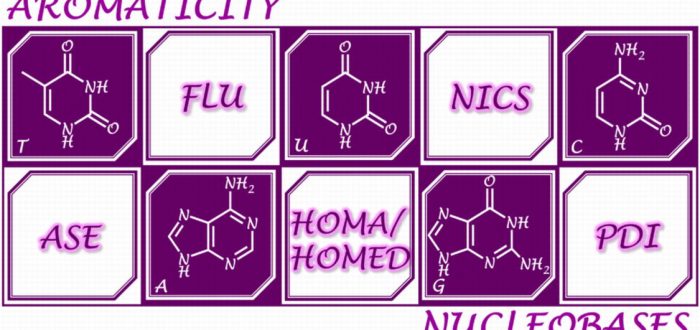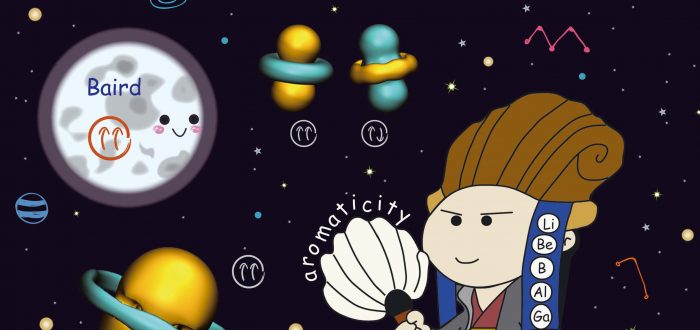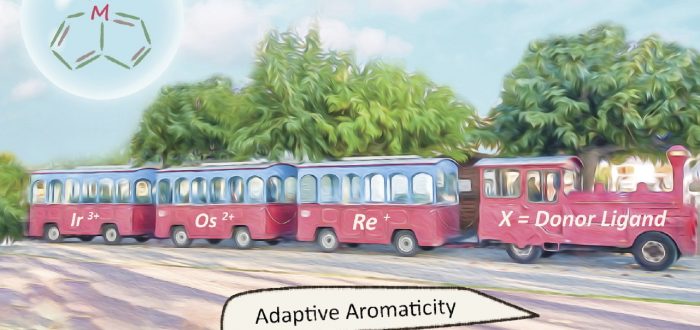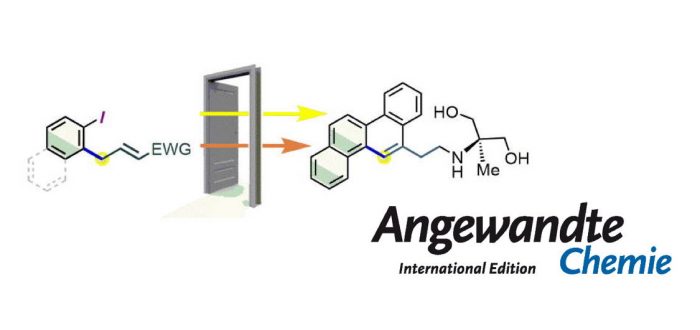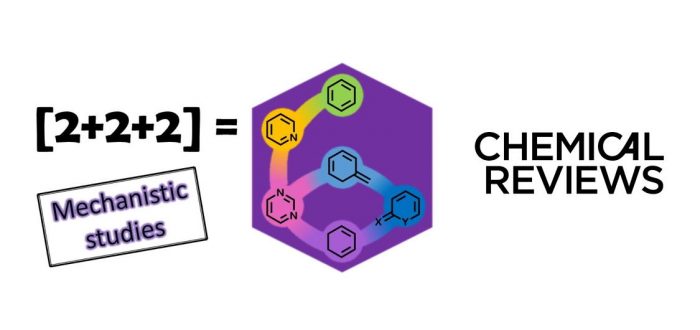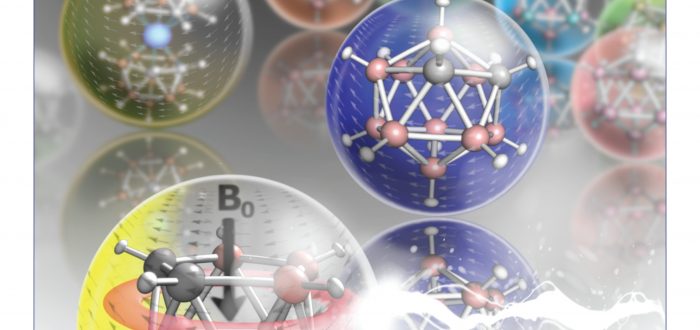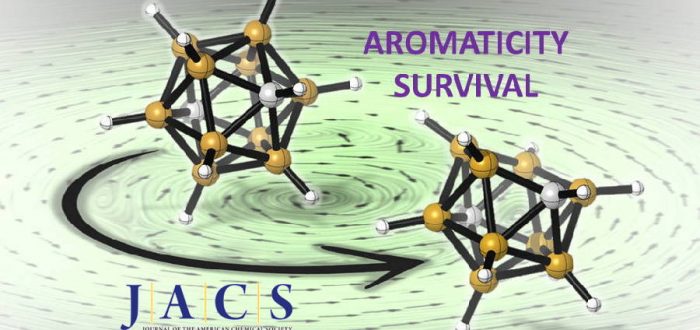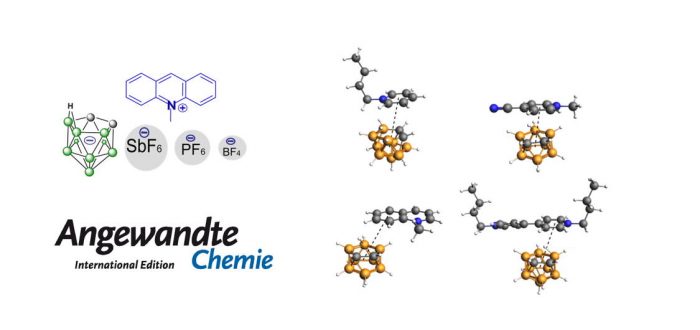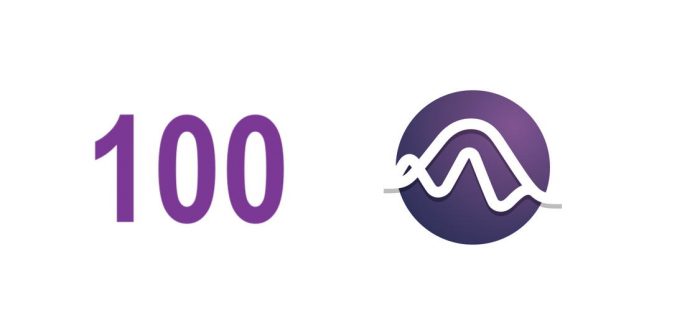A recent paper (Kim et al. Nature Commun. 2019, 10, 4983) claims that there is a double charge transfer in the first singlet excited singlet state in TMTQ (an oligomer composed of a central 1,6-methano[10]annulenes, M10A, and 5-diacyanomethyl-thiophene exocyclic groups, see Figure 1) that is stabilized by the Baird aromaticity acquired by the central M10A
- sec.iqcc@udg.edu
- +34 972 41 83 57
Category: Miquel Solà news
The 3D shape and the resulting physicochemical properties of double-helical DNA/RNA structures are determined not only by individual nucleobases, but also by their additive intermolecular interactions. Energetic contribution from aromatic pi-pi stacking to the stabilization of DNA/RNA is not small and sometimes even comparable to that from H-bonding. The basis of the stacking interactions lies
Chemical Communication features on its front cover the recently published article “All-metal Baird aromaticity”. The work has been carried out by Prof. Jun Zhu at the University of Xiamen and Dandan Chen, Dr. Dariusz W. Szczepanik, and Prof. Miquel Solà (members of the IQCC). The cover is the result of the artistic inspiration of Dandan Chen. The
Chemistry-A European Journal in one of its upcoming issues will feature on the front cover work from the group of Prof. Solà and co-workers, which accompanies the paper titled “Probing the origin of adaptive aromaticity in 16?valence?electron metallapentalenes”. In the Cover Profile, the authors explain to the reader the background of the scientific merits of the
A metal-free C-H allylation strategy is described to access diverse functionalized ortho-allyl-iodoarenes. The method employs hypervalent (diacetoxy)iodoarenes and proceeds through the iodane-guided “iodonio-Claisen” allyl transfer. The use of allylsilanes bearing electron-withdrawing functional groups unlocks the functionalization of a broad range of substrates, including electron-neutral and electron-poor rings. The resulting ortho-allylated iodoarenes are versatile building blocks, with examples
The development of catalytic methodologies involving the formation of C-C bonds to enable the generation of cyclic systems constitutes a field of great relevance in synthetic organic chemistry. One paradigmatic process to accomplish this goal efficiently is the transition-metal catalyzed [2+2+2] cycloaddition reaction since it permits the formation of a wide range of highly functionalized
The Journal of the American Chemical Society (JACS) features on its front cover the recently published article “Too Persistent to Give Up: Aromaticity in Boron Clusters Survives Radical Structural Changes”. The work has been carried out by Francesc Teixidor, Clara Viñas, and Ines Bennour of the Institute of Materials Science of Barcelona (ICMAB-CSIC), Jordi Poater at
Whereas the aromaticity of closo boranes is widely accepted, less is known about the aromaticity of nidoboranes. This work carried out by Prof. Francesc Teixidor, Prof. Clara Viñas, and Dr. Ines Bennour of the Institute of Materials Science of Barcelona (ICMAB-CSIC), Prof. Jordi Poater at the University of Barcelona (previous DiMoCat member) and Sílvia Escayola and
Exploration and comprehension of chemical bonding is one of the central tasks in chemistry. Here, a non-covalent interaction, a nido-cage···? bond, is discovered in a collaborative work between Deshuang Du and Prof. Yan from Nanjing University and Prof. Jordi Poater at the University of Barcelona (ex-IQCC) and Prof. Miquel Solà of IQCC (Univ. Girona). The
The IQCC was created in 1993 (as IQC, focusing only on computational chemistry), and was joined in 2013 by two experimental groups (QBIS, METSO) because of long-standing collaborations and mutual interests. Right now, in this vibrant community of highly motivated researchers that are working on predictive catalysis both at lab benches and through molecular modelling, we


